Failure to Disclose Debt May Jeopardise Consent Order
June 14, 2019Commercial Litigation,Insights,Debt Recovery
A recent finding of the Full Court of the Family Court of Australia serves as a timely reminder that a failure to disclose an asset or debt in a consent order may result in orders being set aside, regardless of whether that asset or debt is in the name of an individual, or the name of an ex-partner.
In the matter of Trustee of the Bankrupt Estate of Hicks & Hicks and Anor [2018] FamCAFC 37, the court was required to determine whether an appeal should be allowed on the basis that the primary judge erred in dismissing an application to set aside consent orders.
Specifically, the case involved Mr and Mrs Hicks, a husband and wife who, during their marriage, had acquired a number of properties between them. Mr Hicks also engaged in a number of business ventures, including a commercial deal to secure a $560,000 investment by Mr S in an enterprise known as U Pty Ltd.
Following their divorce, the couple filed an Application for Consent Orders for property settlement, in which neither party disclosed any liability to Mr S or identified him as a person who may be entitled to become a party to the case - something the application required.
Consequently, the Trustee of the Bankrupt Estate sought to have the final consent orders set aside.
At first instance, Mrs Hicks asserted that although there was a miscarriage of justice, the consent orders should not be set aside. The primary judge found in favour of Mrs Hicks, concluding that the debt was not incurred for a matrimonial objective and thus ruling that she had no involvement in Mr Hicks debt to Mr S. His Honour also contended that the trustee of bankruptcy would find itself in no better position if the order were set aside.
At trial, the Trustee subsequently argued that the consent orders should be set aside. In doing so, the Trustee asserted that the parties to the consent orders had sought to defeat a creditor by not disclosing that Mr S was suing Mr Hicks for $606,000 or notifying Mr S of the orders they proposed.
Thus, the court concluded that the Trial Judge had not taken into account the likely outcome of the property settlement proceedings in the event that the orders were set aside. Ultimately, the court held that the debt of $606,000 was incurred during the marriage and the projects which were linked to the loan were intended to benefit the marriage. On these grounds, the court allowed the appeal, ordering the proceeding be partially remitted for rehearing on the basis that there was a miscarriage of justice pursuant to s79A(1)(a) of the Family Law Act 1975 (Cth).
Expert determination – does ‘according to law’ mean free from legal error?
May 24, 2019Commercial Litigation,Insights
A common form of alternative dispute resolution is to have a dispute decided by an expert. The advantages of this method are that it is usually faster and less expensive than taking your dispute to court. Another advantage is you can appoint an expert with specialist knowledge of the industry that a judge may not have.
One important question regarding this process is how accurate the expert has to be in applying. The general consensus is that unless the expert has legal training, their determination may not be a truly accurate representation of the law. A recent case in the New South Wales Supreme Court does however provide guidance on this issue.
The case of Lainson Holdings Pty Ltd v Duffy Kennedy Pty Ltd [2019] NSWSC 576 concerned a challenge to an expert determination of a building contract dispute. A clause in the contract provided that before proceeding to court or arbitration:
(i) Any dispute or difference whatsoever arising out of or in connection with this contract shall be submitted to an expert in accordance with, and subject to, The Institute of Arbitrators & Mediators Australia Expert Determination Rules.
A dispute arose and was duly referred to an expert who found in favour of the builder. This determination was then challenged by the landowner on the basis that the expert had made an error of law when making their determination. The landowner argued that under Rule 5.1 of Arbitrators & Mediators Australia Expert Determination Rules, the expert was obliged to reach a decision free from legal error.
Hammerschlag J rejected this argument. His Honour found that in the context of the Expert Determination Rules “… the words ‘according to law’ mean in the manner which the law requires a person in the position of the Expert to go about the mandated task, so as to give it contractual efficacy; for example, honestly, without bias or collusion, and while not intoxicated”.
His Honour further commented that the landowners interpretation place an immense burden on experts and would be commercially inconvenient as “[i]ts acceptance would have the consequence that the Determination is, in effect, subject to appeal on any and every question of law determined or legal precept relied on by the Expert, which, if determined or seen differently, would lead to a different result”.
His Honour concluded by stating that the expert determination process is “… no more than a private contractual mechanism to which parties agree and which, as is dealt with above, does no more than create binding contractual obligations. It has no statutory backing as a process. It is not a process which resolves any dispute by the exercise of judicial, quasi-judicial, administrative, statutory or other power or jurisdiction.”
Ultimately, this decision highlights that the expert determination process is not judicial in nature and will therefore be unlikely to be held to the same standards as a Court or Tribunal. As the process is not deemed to be judicial, participants will generally not have any form of appeal from a determination unless this is provided for in their contract.
VSCA highlights the importance of distinguishing between debt and damages in debt recovery claims
May 16, 2019Commercial Litigation,Insights,Debt Recovery
In the matter of Yang v Finder Earth Pty Ltd [2019] VSCA 22, the Victorian Supreme Court of Appeal set aside a default judgement for recovery of an unpaid debt on the basis that the underlying claim was better characterised as one for damages. Ultimately, the case illustrates the importance of properly and clearly pleading a claim when seeking to recover a debt through litigation.
The case ensued after the parties entered into two agreements where the second respondent, Ms Luo, loaned Mr Yang two sums of money totalling $700,000. The terms of the agreements noted that the money was to be applied solely for the purpose of establishing a business. Relevantly, the business was established for the purpose of obtaining an investment-based migrant visa for Ms Luo and her family.
Pursuant to the terms of the agreement, Mr Yang guaranteed and indemnified Ms Luo for the money she lent and for ‘any further loss and damage she sustained’ in connection with the agreement. If the agreement was breached by Mr Yang, all funds lent to the company in advance were to be returned to Ms Luo.
Mr Yang was alleged to have misapplied both the loan money and business revenue for his own benefit, constituting a breach of the agreement. Proceedings were initiated in the County Court where Ms Luo pleaded on the following basis:
By reason of the conduct alleged, Luo has suffered loss and damage being:
(a) a loss of the $700,000; and
(b) exposure to creditors of Finder Earth for which she has provided personal guarantees and has or will need to compensate.
The relief sought by Luo was particularised in the following terms:
$700,000 owing to [Luo] under the Finder Earth Loan Agreement and LL Loan Agreement.
…
A declaration as to the validity of the Yang/Luo Guarantee and Indemnity and an order for such loss and damage owing pursuant to the Yang/Luo Guarantee and Indemnity.
Damages.
Mr Yang’s defence was struck out pursuant to rule 21.02 of the County Court Civil Procedure Rules 2008 (Vic). In the absence of a defence, Ms Luo entered default judgment for $700,000 plus interest and costs. Mr Yang applied to set aside the default judgment, arguing the claim was not for recovery of debt under the guarantee and indemnity but rather a claim for damages arising from Mr Yang’s alleged misapplication of the loan. The application was refused on the basis that Ms Luo’s pleading made it sufficiently clear the claim was for a fixed monetary sum. Mr Yang appealed.
The Court of Appeal allowed Mr Yang’s appeal agreeing that while the foundation of Ms Luo’s claim was the guarantee and indemnity, the money sought was the ‘loss and damage’ suffered as a result of misapplication of the loan. On this basis, Ms Luo was not entitled to enter judgment in the manner she did. The Court noted that had the pleadings mentioned a debt arising under the guarantee by reason of default under the loan agreement, their conclusion would have been different. However, this was not the case as ‘loss and damage’ had been sought instead.
Ultimately this case serves as a reminder to creditors that when seeking to recover a debt through the courts, it is crucial that the relief sought is properly and clearly expressed as a fixed sum owing and not as a recovery of damages suffered by reason of non-payment. If the claim is not properly pleaded, a judgement obtained will be open to scrutiny from higher courts.
Perth accountant sentenced to 4 years imprisonment for $250k tax fraud
May 7, 2019Commercial Litigation,Insights
A Perth accountant has been sentenced to 4 years imprisonment for tax fraud after he was convicted of both obtaining and attempting to obtain over $250,000 from his clients and the ATO.
On 21 February 2019, the Perth District Court heard that during his time as an accountant at Finkelstein Hickmott between May 2016 and July 2017, Shane Read lodged 21 of his client’s tax returns without authorisation and accessed four client’s Activity Statements.
Moreover, Mr Read sought to obtain further funds from the ATO via an unauthorised BAS lodgement containing false information, following which an ATO audit revealed that he had obtained financial advantage committing fraud in the name of unwitting clients. Relevantly, Mr Read was found to have altered bank account details to divert ATO refunds to his personal bank account without his client’s knowledge.
ATO Assistant Commissioner Tim Roach has welcomed the sentence, asserting that the ATO “…will continue to work with tax professionals to ensure the integrity of the system and to protect honest tax professionals and the community from these types of crimes.”
Full Federal Court clarifies tax obligations for Australian’s living and working abroad
March 26, 2019Commercial Litigation,Insights,Debt Recovery
When is a person living overseas no longer a resident for tax purposes? A recent decision of the Full Federal Court provides an interesting perspective but will the Tax Office accept the determination or apply for special leave to appeal the High Court for reconsideration – Watch this space.
In Harding v Commissioner of Taxation [2019] FCAFC 29, the Full Federal Court allowed an appeal by a taxpayer after he disputed the Court’s earlier determination that he was an Australian tax resident.
Mr Harding was an Australian citizen who had worked in the Middle East for over 15 years. In 2006, he returned to Australia to live with his wife and children, but later relocated to Bahrain in 2009 to pursue a work opportunity in Saudi Arabia.
The ATO sought to have Mr Harding pay Australian income tax in respect of the salary paid to him for the 2011 financial year. In doing so, the ATO asserted that despite being employed in Saudi Arabia, Mr Harding was an Australian tax resident pursuant to section 6 of the Income Tax Assessment Act 1936 (Cth).
Relevantly, section 6 provides that a ‘resident of Australia’ is a person who ‘resides in Australia’ (the resides test) and includes persons ‘whose domicile is in Australia, unless the Commissioner is satisfied that the person’s permanent place of abode is outside of Australia’ (the permanent place test).
In assessing his taxpayer status, the court heard that in Bahrain, Mr Harding leased a fully furnished 2-bedroom apartment. During that time Mr Harding’s wife and children remained in Australia and he regularly returned to visit them. It was his intention that his family would later relocate to join him, upon which he would purchase a larger property to serve as the family home. However, in 2011 his marriage broke down and so Mr Harding instead moved to a smaller apartment in the same building.
The resides test
At both instances the court was satisfied that Mr Harding did not reside in Australia, noting that Mr Harding did not intend to return to Australia after his departure in 2009 and that despite having a place to stay in Australia, Mr Harding did not treat this place as his home.
In doing so, the court rejected the Commissioner’s contention that Mr Harding’s Australian citizenship, bank accounts and his family’s retention of his Australian property, were sufficient to establish a finding that he considered Australia to be his home.
The permanent place test
At first instance the primary judge found in favour of the ATO, ruling that Mr Harding did not satisfy the ‘permanent place of abode test’ as the rented Bahrain apartment was only temporary.
However, on appeal the full court was satisfied that the primary judge had applied a ‘too narrow conception’ of what constituted a ‘permanent place of abode outside of Australia’.
In doing so, the court held that the temporary nature of the accommodation did not render it incapable of proving ‘permanent’. That is, the court held that this test should not be determined by reference to whether a person is permanently located at a specific house, flat or dwelling, but rather ‘permanent place’ requires the identification of a country or state in which the person is living permanently.
Here, Justice Logan noted that “… to focus on whether a particular tree (temporary accommodation) is present runs the risk of losing sight of the fact that this tree forms part of a wider wood (permanent place of abode outside of Australia).”
Ultimately, the court was satisfied that Mr Harding lived in Bahrain in 2011, because, among other factors, he had:
- Enrolled his youngest son in a Bahrain school for the 2011 year;
- Purchased a second car for his wife to drive upon relocating to Bahrain;
- Attempted on several occasions to convince his wife to join him in Bahrain as originally planned; and
- Expressed no intention of leaving his Saudi Arabian based employment.
This decision comes in the wake of the Government’s impending consideration of the Board of Taxation’s review of Australian residency rules for individuals. It signals a positive outcome for all Australian’s living and working abroad, namely that they will not automatically be treated as Australian tax residents. However, it will be interesting to see if the ATO seeks special leave to appeal this decision to the High Court.
ASIC charges director and pre-insolvency advisers with dealing with proceeds of crime
March 19, 2019Commercial Litigation,Insights,Debt Recovery
Following an investigation into the affairs of Cap Coast Telecoms Pty Ltd, ASIC has charged a company director and two pre-insolvency advisers with dealing with proceeds of crime, alleging the trio were complicit in the removal of almost $750 000 in company funds.
On 1 March 2019, the trio appeared in the Brisbane Magistrates Court which heard that Richard Ludwig, former Director of Cap Coast Telecoms, had garnered advice from Stephen O’Neill and John Narramore of SME’s R Us following a dispute with a creditor.
ASIC alleged that between October 2014 and January 2015, the duo aided Ludwig in the removal of $743,050 of company funds to accounts in their control before the company was wound up in liquidation.
The majority of the money was then forwarded to Ludwig, with duo retaining a portion.
Mr Ludwig has subsequently been charged with ten counts of breaching his director duties pursuant to the Corporations Act 2001 (Cth) and faces a maximum penalty of 2000 penalty units and/or five years imprisonment.
All three men are charged with one count of dealing in the proceeds of crime worth $100,000 or more under to the Criminal Code 1995 (Cth), for which they face up to 1,200 penalty units and/or 20 years imprisonment.
The trio were bailed and the matter is now due to return to the Brisbane Magistrates Court on 3 May 2019.
Worried you’re trading insolvent? Here’s what to look out for
March 13, 2019Insolvency,Insights
In 2003, the Victorian Supreme Court considered the case of ASIC v Plymin, Elliot & Harrison [2003] VSC 123, in which it was found that a number of companies had traded whilst insolvent. As a result, the associated directors were liable to compensate the creditors $1.4 million for debts incurred in the insolvent period. The case has subsequently been relied upon to identify instances of corporate insolvency, after the court outlined 14 factors likely to indicate insolvent trading. These indicators include:
- Continuing Losses
- Liquidity ratios below 1
- Overdue Commonwealth and State taxes
- Poor relationship with present bank, including inability to borrow further funds
- No access to alternative finance
- Inability to raise further equity capital
- Suppliers placing company on COD, or otherwise demanding special payments before resuming
- Creditors unpaid outside trading terms
- Issuing of post-dated cheques
- Dishonoured cheques
- Special arrangements with selected creditors
- Solicitors' letter, summonses, judgements or warrants issued against the company
- Payments to creditors of rounded sums which are not reconcilable to specific invoices
- Inability to produce timely and accurate financial information to display the company's trading performance and financial position, and make reliable forecasts
Although this has now become the standard list of indicators used by liquidators to justify assertions of insolvency, it is important to remember that they remain indicators only. As such, a court will ultimately make a finding of insolvency ‘on the facts’. Accordingly, the indicators alone cannot be relied upon as a fail-safe template and liquidators may need to provide further evidence to support an allegation of insolvent trading.
I am here to help
If you have answered yes to any of the above indicator's your company may be insolvent. Please do not hesitate to contact me so that we can work together to identify your legal position, safeguard the longevity of your business and recover debt from your debtors.
Jail time for employers who fail to pay superannuation guarantees – A step too far?
March 8, 2019Commercial Litigation,Insights,Employment
On 12 February 2019, the Treasury Laws Amendment (2018 Measures No. 4) Bill 2018 was passed in Parliament, introducing a number of laws designed to improve the integrity of the Superannuation Guarantee system and pay as you go (PAYG) withholding tax compliance. Of the changes, the most significant include new penalties for employers who fail to comply with their superannuation obligations.
The new bill will enable the ATO to direct employers to pay Superannuation Guarantee and will make failure to comply a crime punishable by a fine or up to 12 months jail time.
Assistant Treasurer Stuart Robert has labelled the legislation the “most comprehensive action any Government has taken to address non-compliance with superannuation guarantee law since its introduction in 1992.” He warned that “employers should know that the ATO will be able to closely monitor superannuation compliance and employers will face severe consequences for ripping off their workers.”
However, the bill has not been without criticism, with the Tax Institute declaring the measure unviable and instead asserting that changes to Super Guarantee rules should be prioritised over the imposition of jail sentences. It is submitted that seeking to punish offenders with jail time for not paying a tax debt is an unnecessary overreach and sets a dangerous precedent for further changes to tax collection that will no doubt include jail time for other failures to pay tax debt. Where will it end? Will jail or the prospect of jail act as a deterrent? Do we want to fill jails with employees who struggle or fail to pay certain bills?
This Bill seems to stand in stark contrast to the Government’s recent proposal designed to encourage entrepreneurs to start new businesses, such as the proposal to reduce the standard personal bankruptcy term from 3 years to 1 year.
The proposed jail time for failure to pay the Superannuation Guarantee is a step too far and may well discourage investment in new businesses.
FCA: Provisional liquidators appointed for companies failing to honour tax liabilities
March 5, 2019Commercial Litigation,Insights
In the recent decision of Deputy Commissioner of Taxation v Ausmart Services Pty Ltd [2018] FCA 1912, the Australian Taxation Office (ATO) has been successful in their application to have provisional liquidators appointed for eight labour hire businesses after they entered liquidation or were deregistered without paying their outstanding tax liabilities.
Scott Shi was the head of a large labour hire business which supplied the majority of workers to a number of abattoirs through 8 associated companies. In 2015, an ATO taskforce began an audit of the companies in this group, and of all persons associated with it. In doing so, it was revealed that although Mr Shi was not listed as the Director on ASIC’s register, he assumed control of each of the companies.
Following the investigation, it was determined that the companies had incurred a number of unpaid primary tax liabilities, estimated to exceed $121 million. The taskforce revealed that the companies treated many workers as contractors rather than employees in order to reap the consequential tax implications. Ultimately, the ATO concluded that the companies’ liabilities included:
- Failure to remit PAYG withholding amounts to the ATO, despite withholding PAYG withholding amounts;
- Failure to comply with their obligation as employers pursuant to the Superannuation Guarantee (Administration) Act 1992 (Cth) and failure to pay the subsequent superannuation guarantee charge shortfalls;
- The lodgement of Business Activity Statements (BAS) in which they claimed GST input credits equivalent to 1/11 of the wages they paid to the employees, despite none of the employees being registered for GST and no GST being invoiced to the companies by the employees or paid by the employees to the ATO, resulting in the companies receiving refunds for the GST they never paid.
- Underpaying, or failing to pay GST on all of the fees they received from abattoirs, meaning that the money entering many of the companies’ bank accounts far exceeded any income declared in tax returns, even after deductions were allowed for expenses such as wages;
- Failure to lodge tax returns for any or all income years;
- Failure to appropriately lodge BAS; and
- Understating the income and GST payable on tax returns and activity statements, while over-claiming GST input credits.
Furthermore, the ATO investigations revealed that a number of companies in Mr Shi’s control had already been wound up and deregistered. Relevantly, these companies had all had their assets stripped prior to liquidation or deregistration, with the funds not used for business expenses either transferred to other companies in the group or transferred offshore for the benefit of Mr Shi, his relatives and associates. It was estimated that in the six years from 30 June 2010, more than $43.1 million had been remitted overseas by companies at Mr Shi’s direction.
The matter was heard before the Federal Court last November, where the ATO sought an order that the eight companies be wound up. In doing so, the Commissioner asserted that the companies fraud, phoenix activity and tax evasion enlivened the court’s discretion to wind up the company under section 461(1)(k) of the Corporations Act 2001.
Accordingly, Yates J was required to consider whether there was a reasonable prospect that a winding up order would be made and if so, whether pursuant to section 472, there was a valid reason for placing the affairs of the company under external control prior to the hearing of the winding up application.
Given the flow of the companies’ liquid assets to Mr Shi and associated parties, the court concluded that the conduct and management of the companies’ affairs was inconsistent with lawful and proper compliance with their taxation responsibilities and obligations.
Ultimately, Yates J was satisfied that the companies had engaged in ‘systemic and deliberate non-compliance with their taxation obligations to the tune of many millions of dollars’, and that the flow of funds through the companies was ‘haphazard and ad hoc’. His Honour was satisfied that there was a real and substantial likelihood that winding up orders would be made against the companies as final relief.
Accordingly, Justice Yates was persuaded that provisional liquidators should be appointed to preserve the companies’ assets and to protect them from fraudulent dissipation to the detriment of the Commonwealth and other creditors. His Honour concluded that ex parte relief was warranted given the risk that giving notice of the application may have defeated the purpose for which the provisional liquidators were to be appointed.
Insolvency Rules construed by Court
March 3, 2019Insolvency,Insights
Recently, in The Matter of 1st Fleet Pty Ltd (in liq) [2019] NSWSC 6, the New South Wales Supreme Court offered guidance on the scope and operation of the Insolvency Practice Schedule (Corporations) (IPSC), which provides rules on when creditors can request and are entitled to recover specified information and documents from external administrators.
On 22 May 2012, Liquidators were appointed as voluntary administrators of First Fleet and its associated companies and at a creditors meeting on 2 July 2012, it was decided that a Committee of Inspection be appointed.
The Committee subsequently approved the liquidator’s remuneration on a time basis and by 18 July 2018, the Liquidators had accrued $4.4 million in remuneration for work done between 25 April 2012 and 1 July 2018.
Having advanced $9,444,014 to employees of the Companies in liquidation under the General Employee Entitlements and Redundancy Scheme (GEERS) and the Fair Entitlements Guarantee (FEG) scheme, the Commonwealth had an interest in the matter. Accordingly, on 24 August 2018, solicitors for the Commonwealth questioned whether certain persons acting as creditor representatives appointed to the Committee of Inspection were ineligible, and if so, whether the Committee of Inspection consequently lacked authority to pass remuneration resolutions. They also expressed concern that the quantum of remuneration was unreasonable.
The Commonwealth subsequently sought information from the liquidators regarding the formation of the Committee of Inspection and remuneration approved by it, including a breakdown of the calculation of remuneration payments to the liquidators. However, the liquidators failed to comply and so the case ensued.
Ultimately, the court was required to consider whether the liquidator’s failure to comply with the Commonwealth's request constituted a breach of sections 70-45 and 70-55 of the IPSC, and whether it should subsequently order the production of that information under s 70-90. In doing so, Justice Black was required to determine whether the Commonwealth's request was both relevant and reasonable, in which case, the liquidators would be obliged to comply with it.
Here, the court referred to section 70-15 of the Insolvency Practice Rules (Corporations) 2016, which it deemed an exhaustive list of the circumstances in which it is reasonable to comply with a request.
Ultimately, Justice Black held that it is only reasonable for an external administrator to comply with a request if that external administrator, acting in good faith, is of the opinion that one or other of the specified circumstances exists, and it is otherwise reasonable for that external administrator to comply.
Committee Constitution
The court refused the Commonwealth's request for information, finding that it was unreasonable on three grounds;
- The liquidators had confirmed that after having made appropriate searches, to their knowledge, there were no further documents to be produced.
- The liquidators could not reasonably be asked to produce information to 'establish', or documents to 'support', propositions which the Commonwealth, not they, had formulated and which they did not advance.
- A number of the orders sought in the Originating Process had been significantly reformulated from those originally sought, and thus the liquidators could not be held to have failed to produce the documents because they were not previously requested to do so.
Liquidator’s Remuneration
The court was satisfied that where the liquidators had not produced the information sought by the Commonwealth, they should now be ordered to do so.
The liquidators were also ordered to pay half of the Commonwealth’s costs, without recourse to 1st Fleet’s assets.
This decision highlights some key indicators regarding the scope of sections 70-45 and 70-55 of the IPSC, particularly its broad interpretation and reinforces that where information or documents are required to be disclosed, the court only has a narrow discretion to withhold an order. Moreover, it clarifies the scope of an external administrator’s obligations, reinforcing that where a party (like the Commonwealth) requests specific information or documents and GEERS or FEG payments have been received by the external administrator on behalf of the company to which they are appointed, it is mandatory to provide the information and documents sought.











